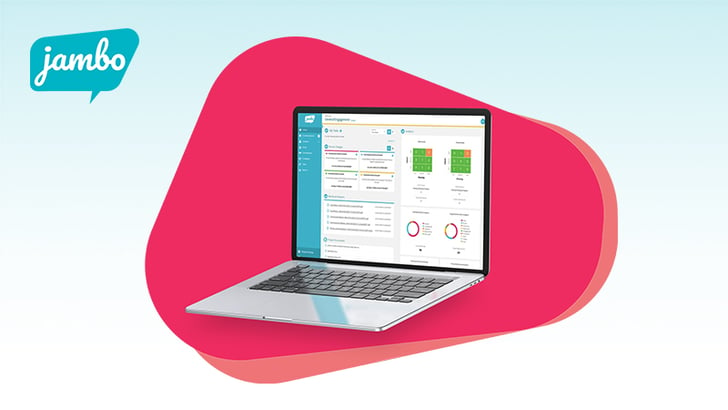
Step 3: Create a stakeholder communication plan
A stakeholder communication plan or strategy defines who to contact, what to share or request, how and when to communicate, and how to record and evaluate interactions. It aligns messages to stakeholder needs and project objectives.
Stakeholder communication plan components
What to include in your communication plan:
- Communication objectives: What should each interaction achieve (inform, consult, involve, collaborate, empower)?
- Audiences and preferences: List your stakeholder groups and their preferred channels and frequency (weekly email, monthly meeting, quarterly briefing). Record accessibility needs, language, and cultural protocols.
- Key messages (by group/segment): Think concise, plain‑language summaries customized to interests.
- Communication channels and cadence: Email/SMS, webinar, town hall, 1:1 briefings or meetings, community meetings or open houses, and online portals. Match the channel to the purpose and preference.
- Team roles and approvals required: Spokesperson, reviewers, and response time targets (RACI/DACI).
- How will you manage and track two‑way feedback? How can your stakeholders ask questions or submit feedback (surveys, office hours, web forms), and how will you acknowledge and respond to them?
- Communication recording process and data privacy management: What will you use to log your communications and consent to communicate, and how can you explain the data security of the system you use to store this information if stakeholders ask?
- Risk and issue escalation procedure: Define a straightforward process for handling complaints or urgent concerns/issues.
- Metrics: Based on the objectives you laid out at the start of your plan, what metrics or KPIs do you want to monitor as part of this plan? Examples include response rates, attendance, time‑to‑response, commitment closure, and stakeholder sentiment or satisfaction levels.
Enable your communication plan in your SRM
Your stakeholders' profiles in your SRM can be updated to reflect their stakeholder group and preferences, such as type or frequency of communication. You can also assign tasks to ensure the communications you committed to in your plan are actioned, track your communications with your stakeholders (emails, meeting notes, phone calls, etc. ), and generate reports to demonstrate timely, responsive communication.
What are the principles for stakeholder communication plans?
- Relevance: Share only what the audience needs for them to decide or act on.
- Predictability: Set a schedule or cadence for communication and stick to it.
- Accessibility and inclusion: Provide translation if needed, alternative formats (information sheets, videos, etc.), and ensure accessible venues and tools.
- Consistency with flexibility: Maintain core messages while adapting depth and format to each stakeholder group.
- Transparency: Plan to explain the basis for decisions and show how input influenced outcomes.
Access a concise communications strategy guide to relate with stakeholders →
Step 4: Implement your stakeholder communication plan
Your communication plan can be implemented when there are clear team roles and responsibilities, a predictable cadence laid out, and a two-way dialogue to take place. The goal is consistent execution, timely response, and visible follow‑through.
Prepare the communications team
- Brief everyone on objectives, key messages, roles, and decision rights (use a simple RACI/DACI).
- Set escalation paths for sensitive topics and define approval workflows.
- Create templates for updates, minutes, "you said, we did" summaries, and reports.
Launch the communication cadence
- Schedule touchpoints by audience preference (e.g., weekly email, monthly briefing, quarterly forum).
- Ensure accessibility and inclusion (plain language, translations, accessible venues/formats).
- Publish a calendar so participants know when and how they will hear from you.
Communicate and listen to your stakeholders
- Deliver timely updates, explain the basis for decisions, and invite questions.
- Keep the dialogue open: acknowledge inputs promptly, capture suggestions, and respond within agreed timeframes.
- Use multiple channels (email, meetings, webinars, surveys, office hours) to reach different groups.
Manage commitments and concerns
- Log every commitment and concern with an owner, due date, status, and next step.
- Provide regular progress updates until items are closed.
- Share concise summaries showing how feedback influenced actions.
Monitor and report
- Track response time, attendance, sentiment trends, commitment closure rate, and dispute volume.
- Produce brief dashboards for sponsors and community/rights‑holder updates for transparency.
- Maintain an auditable record of interactions, materials, and outcomes.
Review and adjust the plan
- Revisit your plan regularly (e.g., monthly, quarterly).
- Update audiences, preferences, and priorities as projects evolve or new participants join.
- Refine messages, cadence, and channels based on feedback and performance data.
- Document lessons and incorporate them into the next cycle
Enable the plan with SRM software
- Store stakeholder profiles, communication preferences, and accessibility needs; record outreach with them.
- Automate reminders for tasks, commitments, and follow‑ups; set alerts for overdue items.
- Link people, organizations, topics, locations, and decisions to preserve context.
- Generate reports for leadership, regulators, and community updates.
- Use role‑based permissions, version history, and secure storage to protect data and privacy.
Align stakeholder relationship management with established standards
To keep your stakeholder relationship management consistent, accountable, and credible, you can follow principles from IAP2 (inform, consult, involve, collaborate, empower), AA1000SE (inclusivity, materiality, responsiveness), or PMI practice guides (governance, risk, communications).
Learn more about implementing Jambo stakeholder relationship management software →
How to nurture stakeholder relationships long-term
How to nurture relationships with stakeholders is an important consideration for any successful project. Building strong stakeholder connections starts with clear and intentional communication. Customize your messaging to each stakeholder, consider what information they need, how often they should receive updates, and which communication channels they prefer. By providing consistent and transparent updates throughout the project, you establish trust and show stakeholders that they can rely on you for timely and accurate information.
As the project progresses, continuously monitor stakeholders to identify changes in their influence, opinions, or grouping. Address any resistance to change by actively engaging with those with concerns, holding meetings, answering questions, and highlighting the project's benefits. Sharing critical information early, especially about issues or changes, makes stakeholders feel involved and valued. Inviting their input when making decisions helps build ongoing support and ensures that stakeholder relationships remain positive and productive.
Find out more tips on how to nurture relationships with stakeholders →
Next steps: Explore Jambo Stakeholder Relationship Management (SRM) software
If you're evaluating tools to manage your stakeholder relationships closely, SRM software may be the way to go. Consider a short discovery call with the Jambo sales team. In about 15 minutes, we'll discuss your needs and determine if Jambo is the right tool for you. Book a demo.











